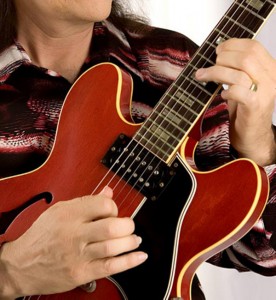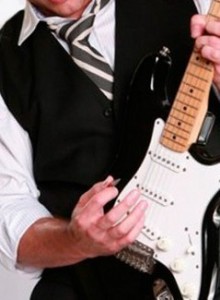 This is the third post in a series of discussions on how to practice, for improving your guitar playing. If you missed the first or second article, you can access them at How to Practice, Part I and How to Practice, Part II. I can’t possibly over stress how valuable this information is if it is learned, internalized, and implemented in your practice routine. It will definitely make you a better player.
This is the third post in a series of discussions on how to practice, for improving your guitar playing. If you missed the first or second article, you can access them at How to Practice, Part I and How to Practice, Part II. I can’t possibly over stress how valuable this information is if it is learned, internalized, and implemented in your practice routine. It will definitely make you a better player.
This article is almost a bridge between the How to Practice series and the soon to be created, What to Practice series. It deals with analyzing and practicing most of the varying internal rhythms between notes and their time valuations, and so even though they partly describe what to practice, you can use this concept against any scale or mode, or linear combination of notes.
We are going to begin by looking at how the notes you play sit against the clicks of your metronome, and we are going to use how we handle the space between each click to play combinations of both duple and triple meter.
 The first thing we must do is review our note values in 4/4 time. The most basic note we are going to use is the quarter note, which gets one beat, or one click of the metronome. The second basic note we are going to use is the eighth note which receives ½ of a beat. This can be accomplished by imagining you are tapping your foot to each click of the metronome. In between each tap, before your foot can come down again for the next tap, it must go up. If you consider that you can play notes evenly on the tap and on the up in between taps, you have subdivided the timing of one beat into two notes, which when played evenly, make one beat together, or each one ½ of a beat. The last basic note we are going to consider is a sixteenth note. This note divides one beat into four equal segments. If we use the toe tapping system, we will play two equally spaced notes per down motion of the foot and two equally spaced notes per up motion of the foot.
The first thing we must do is review our note values in 4/4 time. The most basic note we are going to use is the quarter note, which gets one beat, or one click of the metronome. The second basic note we are going to use is the eighth note which receives ½ of a beat. This can be accomplished by imagining you are tapping your foot to each click of the metronome. In between each tap, before your foot can come down again for the next tap, it must go up. If you consider that you can play notes evenly on the tap and on the up in between taps, you have subdivided the timing of one beat into two notes, which when played evenly, make one beat together, or each one ½ of a beat. The last basic note we are going to consider is a sixteenth note. This note divides one beat into four equal segments. If we use the toe tapping system, we will play two equally spaced notes per down motion of the foot and two equally spaced notes per up motion of the foot.
In order to give us some worthwhile rhythmic diversity in our practice of scales, we are going to add in some triplets of two of the note types we just discussed. Quarter note triplets, or three against two triplets as some musicians refer to them, equally subdivide two complete beats. This is where they get the name three against two. It is very difficult to create a good referent to describe how to consider playing these triplets, so I suggest listening to the song “America” from West Side Story. The rhythm of the notes for the word America during the phrase, “I like to be in America,” is a quarter note triplet. You can hear the three equal notes against two beats.
In addition, we are going to include an eighth note triplet, which is three notes equally spaced over one beat. During that song America from West Side Story, the phrase “I like to” is an eighth note triplet, as is the following, “be in A-“so you can hear two eighth note triplets leading into a quarter note triplet.
 So the way we are going to tie all of this together when we practice our scales and modes, is to play note groups in ascending speeds until we finish the sets. Each grouping will take four beats to happen. So we will play quarter notes for four beats, quarter note triplets for four beats, eighth notes for four beats, eighth note triplets for four beats, and finally sixteenth notes for four beats. This allows you to play through most of the positions of your scales or modes from low to high, back to low, and back to high again. You will be playing a total of 4 notes as quarter notes, 6 notes as quarter note triplets, 8 notes as eighth notes, 12 notes as eighth note triplets, and finally 16 notes as sixteenth notes. You can see that since each one of these groupings will be played against just four beats, the notes will be played increasingly faster with each set.
So the way we are going to tie all of this together when we practice our scales and modes, is to play note groups in ascending speeds until we finish the sets. Each grouping will take four beats to happen. So we will play quarter notes for four beats, quarter note triplets for four beats, eighth notes for four beats, eighth note triplets for four beats, and finally sixteenth notes for four beats. This allows you to play through most of the positions of your scales or modes from low to high, back to low, and back to high again. You will be playing a total of 4 notes as quarter notes, 6 notes as quarter note triplets, 8 notes as eighth notes, 12 notes as eighth note triplets, and finally 16 notes as sixteenth notes. You can see that since each one of these groupings will be played against just four beats, the notes will be played increasingly faster with each set.
You will be playing 1 note per beat with the quarter notes, 1 & ½ notes per beat with the quarter note triplets, 2 notes per beat with the eighth notes, 3 notes per beat with the eighth note triplets, and 4 notes per beat with the sixteenth notes. In order to familiarize yourself with the way the notes play against the metronome pulses, you may want to begin playing each one of the note types by itself all the way up and down the scale positions before you attempt to blend them, but ultimately, playing the chain of increasing rhythmic speeds through the five note rhythm types is an adventure in approaching more advanced playing.
I’m amazed at how challenging it is to describe this exercise in words compared to simply playing it, so good luck with interpreting what I’ve written here. Quite soon I will be recording audios & videos of an assortment of the posts I am making here to assist you in making this material usable.
Should you want to work with me in private sessions, please contact me through the Guitar Lesson Expert site.
